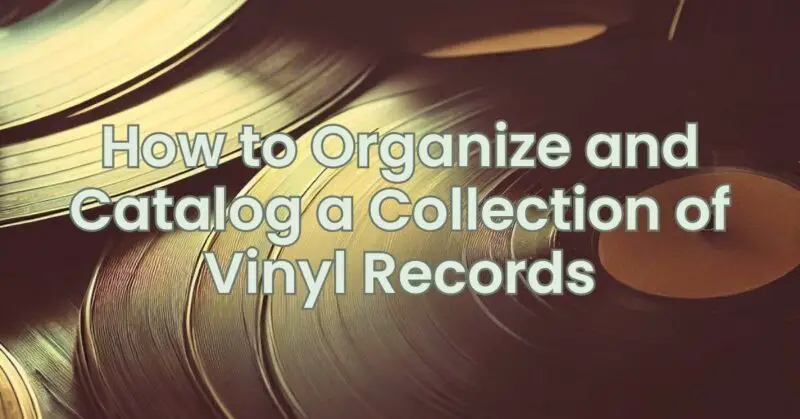Building a vinyl record collection is an exciting endeavor for music enthusiasts. However, as your collection grows, it becomes essential to have a systematic method of organization and cataloging. The proper organization not only helps you locate specific records easily but also allows you to appreciate and maintain your collection more effectively. In this article, we will provide you with a step-by-step guide on how to organize and catalog your vinyl record collection.
- Evaluate Your Collection: Before diving into organizing and cataloging, take some time to evaluate your collection and assess its size, genres, and any specific categorization needs you may have. This will help you determine the most suitable organizational approach.
- Choose an Organization System: There are various methods to organize your vinyl records, and the best one for you depends on your personal preference. Here are a few popular options:
a. Alphabetical Order: Organize your records alphabetically by the artist’s or band’s name. This method allows for quick and easy access to specific records.
b. Genre-Based Organization: Group your records based on genres such as rock, jazz, pop, etc. Within each genre, you can further organize them alphabetically or by subgenres.
c. Chronological Order: Arrange your records in chronological order based on the release year. This approach allows you to see the progression of artists or genres over time.
d. Personalized System: Create a customized organization system based on your preferences, such as organizing by label, country of origin, or personal ratings.
- Create a Cataloging System: Cataloging your vinyl records involves keeping a record of essential information about each record in your collection. This information can include:
a. Artist/Band Name b. Album Title c. Release Year d. Genre e. Record Label f. Catalog Number g. Condition h. Personal Notes or Comments
- Choose a Cataloging Method: You can opt for manual cataloging using a physical record-keeping system or use digital tools for a more efficient approach. Consider the following options:
a. Physical Cataloging: Use index cards, notebooks, or dedicated record-keeping systems to manually record and organize the information about each record.
b. Spreadsheet: Utilize spreadsheet software such as Microsoft Excel or Google Sheets to create a digital catalog. Set up columns for each piece of information you want to include.
c. Online Databases: Take advantage of online record cataloging platforms like Discogs or Collectorz.com. These platforms provide comprehensive databases and customizable cataloging features.
- Enter Record Information: Start entering the relevant information for each record in your catalog. This includes the details mentioned earlier, such as artist/band name, album title, release year, and so on. You can also include additional fields, such as a personal rating or any noteworthy details about the record.
- Maintain Consistency: Ensure consistency in how you enter the information in your catalog. Use a standardized format for artist names, album titles, and other fields to maintain accuracy and ease of searching.
- Track Changes and Updates: As you acquire new records or make changes to your collection, keep your catalog up to date. Add new entries, remove sold or traded records, and make necessary updates to reflect any changes in condition or personal notes.
- Implement Storage Solutions: In addition to organizing and cataloging, consider appropriate storage solutions to protect your vinyl records from dust, moisture, and damage. Invest in record sleeves, storage boxes, or specialized record shelving units to keep your collection safe and accessible.
- Backup Your Digital Catalog: If you opt for a digital catalog, make regular backups to prevent data loss. Consider storing backups in the cloud or external hard drives for added security.
Organizing and cataloging your vinyl record collection is a valuable step in managing and enjoying your music library. By choosing an organization system, creating a cataloging method, and maintaining consistency, you’ll be able to easily locate and appreciate your records. Whether you prefer a physical or digital catalog, the key is to invest time and effort into creating a well-organized system that suits your collection’s unique needs. With a properly organized and cataloged collection, you can enjoy the beauty of vinyl records and share your passion for music with ease.

